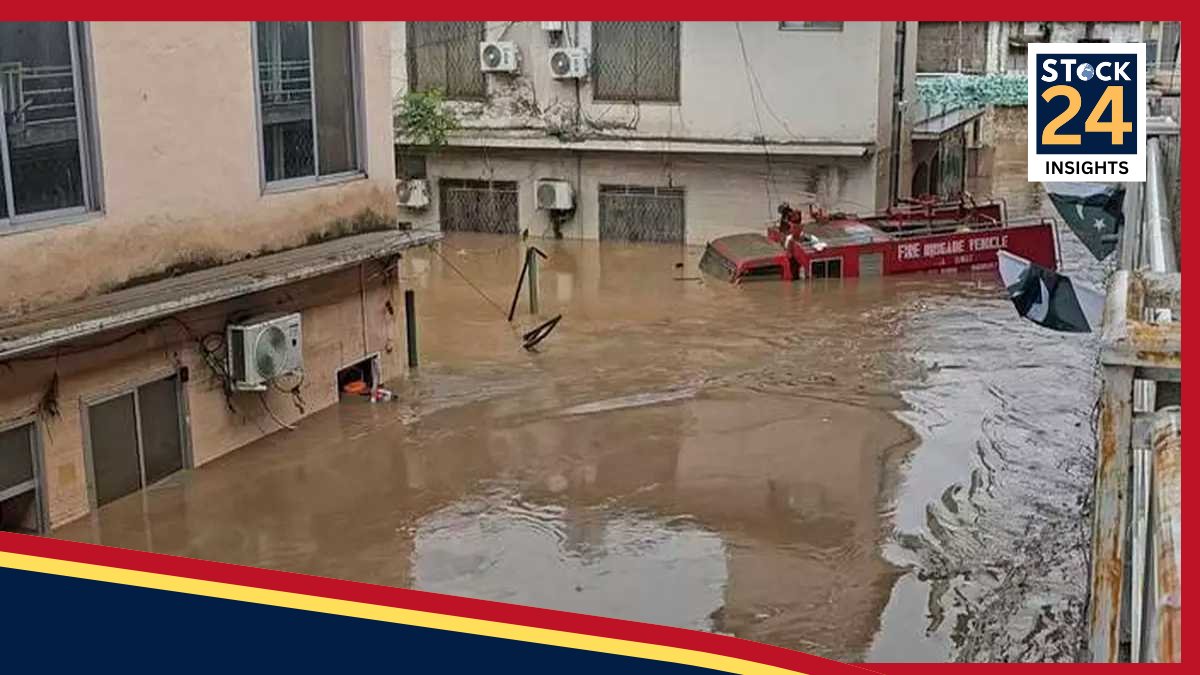Pakistan Floods: Death Toll Surpasses 220 in Northwest as ‘Flood of Boulders’ Destroys Homes
Rescuers are in a desperate race against time in Pakistan's Khyber Pakhtunkhwa province, where the death toll from catastrophic flash floods and landslides has climbed to at least 220. Officials warn of more torrential rain in the coming days as the nation grapples with a devastating monsoon season exacerbated by climate change.

Massive rescue operations were underway Saturday in the Buner district of northwest Pakistan after torrential rains on Friday triggered a disaster described by survivors as a “flood of boulders.” Emergency crews recovered 63 more bodies overnight from homes that were completely flattened by the force of the water and debris.
The villages of Pir Baba and Malik Pura have been identified as the epicenters of the tragedy, suffering the highest number of fatalities. Hundreds of rescue workers continue to search through the rubble for survivors, but hope is fading as the scale of the destruction becomes clear.
Mohammad Suhail, a spokesman for the emergency services, confirmed that dozens of homes were swept away in the deluge, which caught communities entirely by surprise.
“It Came So Fast”: Eyewitnesses Describe Unprecedented Devastation
Survivors have painted a terrifying picture of the event, describing a disaster that was more than just rising water.
“It was not just the floodwater, it was a flood of boulders as well, which we saw for the first time in our lives,” said Sultan Syed, 45, who suffered a broken arm.
Local police officer Imtiaz Khan, who barely escaped with his life, said the floodwaters carried hundreds of boulders and “tons of rocks” that flattened homes within minutes. “Our police station was washed away too and if we hadn’t climbed to higher ground, we would not have survived,” Khan said.
The sheer speed of the event left many with no time to react. “The floods came so fast that many could not leave their homes,” said 53-year-old Mohammad Khan.
According to Dr. Mohammad Tariq, a doctor in Buner, most victims died before they could even reach a hospital. He noted a tragic demographic among the casualties: “Many among the dead were children and men, while women were away in the hills collecting firewood and grazing cattle.”
The Human Toll: Grief, Mass Funerals, and a Community in Mourning
As the waters began to recede, the immense human cost of the disaster became painfully visible. Streets were filled with giant rocks, and entire sections of villages were wiped off the map.
On Saturday, the community was engulfed in grief as mourners held mass funerals. In Pir Baba, the covered bodies of loved ones were laid out on wooden bedframes before burial.
“Before yesterday’s floods, the area was bustling with life. Now, there is grief and sorrow everywhere,” said Mufti Fazal, a local cleric who has been leading funeral prayers across the district.
The personal losses are staggering. Schoolteacher Suleman Khan lost 25 members of his extended family when the floods destroyed his village of Qadar Nagar. He and his brother only survived because they were not at home at the time.
Official Response and Warnings of More Rain
Pakistan’s top leaders, including the prime minister and president, have offered condolences and pledged support for the victims. The chief minister of Khyber Pakhtunkhwa, Ali Amin Gandapur, stated that efforts are underway to repair roads and restore critical infrastructure.
However, the immediate danger has not passed. Pakistan’s Meteorological Department has predicted more torrential rains and warned that monsoon activity is likely to intensify from Sunday onwards, raising fears of further flooding and landslides in the vulnerable northern and northwestern regions.
This year’s monsoon season has been unusually severe. Experts link the higher-than-normal rainfall directly to climate change. According to the National Disaster Management Authority, 541 people have been killed in rain-related incidents across Pakistan since June 26.
Regional Impact: Tourists Rescued, Tragedies Across the Border
The extreme weather is affecting a wide area. Pakistani officials confirmed that since Thursday, rescuers have evacuated more than 3,500 tourists who were trapped by floods in the country’s northern regions, many of whom had ignored government warnings to avoid vulnerable areas.
The crisis is tragically mirrored across the border in India-controlled Kashmir, where a cloudburst in the remote village of Chositi killed 60 people and injured 150. The disaster struck during an annual Hindu pilgrimage, trapping thousands before they could be evacuated.
Experts note that such cloudbursts are becoming increasingly frequent in the Himalayan regions, further evidence of a dangerously changing climate. The current tragedy in Pakistan serves as a grim echo of the nation’s worst-ever monsoon season in 2022, which killed over 1,700 people and caused an estimated $40 billion in damage.


